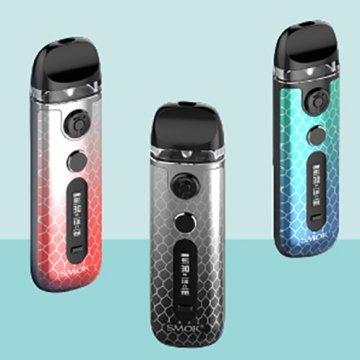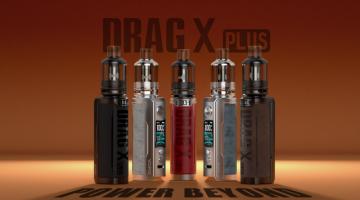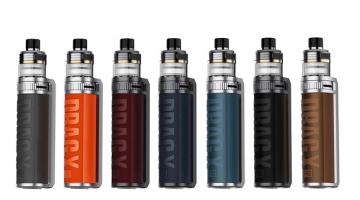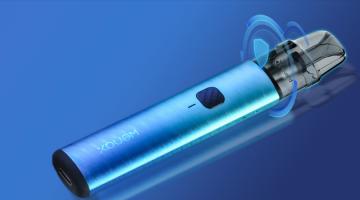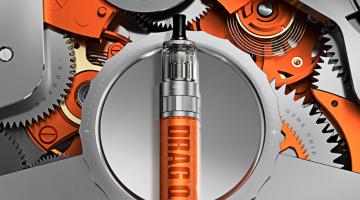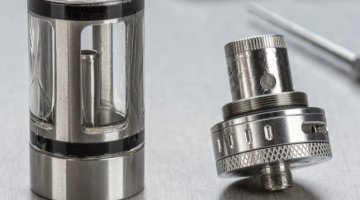Anyone who has taken two seconds to survey the breadth of the vaporizer market quickly notices that various brands tout their heating element as "the best available" while pointing out health risks associated with their competitors' models. Evaluating all these (sometimes conflicting) statements can be quite a task. The purpose of this article is not to endorse a specific type of heating element, but instead to gather the available information about heating elements in one place to aid people in making informed decisions when buying a vaporizer.
Why Do Heating Elements Matter? The heating element is the most integral part of any vaporizer. It regulates the temperature of the air that catalyzes the active ingredients as the air passes through it. A note: the air passing through the heating element may be either propelled by a pump in balloon-style models i.e. the Volcano Vaporizer or by one's own in direct-inhalation style vaporizers i.e. the VaporCannon. Some models, such as the herbalAire, are capable of both balloon and direct-inhale style vaporization. A primary requirement for all heating elements is precision - you want your vaporizer to actually be at the temperature you set - but health considerations may also play when people shop for vaporizers.
Types of Heating Elements:
#1: Ceramic
Ceramic heating elements are the most commonly type of heating elements. Their proponents argue that they are the cleanest and therefore healthiest option. This statement holds some truth: ceramics can withstand very high temperatures (about 3000*F) before the material starts to transform to a gas and are therefore very clean and healthy. Some companies take this logic a step further and argue that since other types of heating elements have lower "boiling points" they are dirtier and less healthy. This argument is somewhat flawed: while other heating elements have lower boiling points, these points are usually still well in excess of typical vaporizing temperatures. Read about the specific types below for more info.
Another important consideration when evaluation vaporizers with ceramic heating elements is the quality of the ceramic unit because the term "ceramic" is used to describe types of elements that are quite different in design. This is due to the fact that "ceramic" merely refers to whether or not the unit incorporates some ceramic into the heating element's design, it does not mean that the air only touches ceramic material. This makes buying vaporizers with ceramic heating elements difficult unless one knows the specifics of the designs used by each manufacturer. As a general rule of thumb cheaper vaporizers are more likely to have exposed low-quality wire or solder within the heating element's ceramic structure that can emit toxins. So steer clear of that digi vape if you want quality vapor. While the only definitive test is to take an element completely apart to see how it is constructed, some manufacturers will address these questions if you contact them. The manufacturers of the low quality models will dodge them.
Low quality ceramic elements reflect poorly on all ceramic heating elements, which is unfortunate because a well-designed ceramic element is very clean. Top of the line ceramic heating elements are very precise too, although precision is also a function of the circuitry and computer chip technology used with the heating element.
Examples of vaporizers with good ceramic heating elements: VaporBrothers, Phedor and Hotbox
#2: Aluminum
Some of the best vaporizers on the market use aluminum heating elements. Manufacturers say that aluminum is more precise than ceramic elements because it responds faster the temperature changes:
"One reason the Volcano maintains such perfect temperature control is because it uses an aluminum element and block, and aluminum has different properties than potential practical designs using ceramics. An aluminum element and block can more rapidly adjust for effects of air pressure and flow over plant material...the key to vaporization is maintaining control over temperature and flow, which ultimately leads to more perfect control over vapor density."
Critics of vaporizers with aluminum heating elements cite health risks associated with exposure to aluminum, namely an increased risk of Alzheimer's. It is important to note two things here. The first is from the Storz & Bickel FAQ page:
"Q. Does the aluminum heating block emit any substances which are subsequently inhaled by the user?
A. No. the top temperature reached in the heating block 240°C (464°F) is by far below the temperature that is needed to emit any substances out of the aluminum alloy AlMgSi, melting point 660°C (1220°F); boiling point 2519°C (4566°F) used by us. This is documented by an analysis of the air produced by the Volcano on top temperature made by the University of Leiden, Netherlands."
So a well designed aluminum heating elements seem to be quite clean.
As for the increased risk of Alzheimer's: it's hard to be certain whether something does or does not play a role in the development of Alzheimer's because the illness itself is not completely understood, but aluminum does not appear to significantly increase a person's susceptibility. These articles from Scientific American and Alzheimer's.org discuss this conclusion in depth.
Examples of vaporizers with good aluminum heating elements: Volcano, herbalaire
#3: Glass
Glass is basically the same as ceramic when it comes to heating elements. Only one vaporizer with an all-glass heating element is currently available: the Vapolution Vaporizer.
CONCLUSION: Picking a Vaporizer with the Right Heating Element
In the end picking a heating element is a matter of personal choice. Health considerations are paramount for some, while precision may dictate the choices of others. Those worried about health should be advised that the type of plastic hosing used and type of plastic tubing used inside different models are also very relevant, but this is a topic for a different article. The most expensive vaporizers obviously have the best heating elements - this is a large part of what you are paying for - but some mid-range models also offer quite viable (usually ceramic) options. Do a little research before you buy too, it will pay off. Hopefully this article has given you a place to start.

